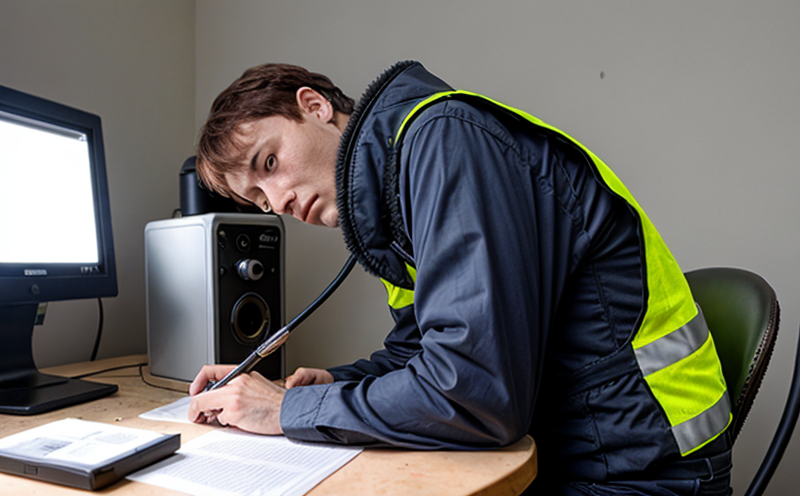ASTM E1742 Radiographic Examination of Marine Welds
The ASTM E1742 standard provides a detailed procedure for performing radiographic examination on marine welds. This non-destructive evaluation (NDE) technique is vital in ensuring the integrity and reliability of welded structures, especially in sectors where safety is paramount such as offshore oil rigs, shipbuilding, and maritime transportation.
The primary objective of ASTM E1742 is to assess the internal quality of welds by producing images that reveal any defects or irregularities within the material. Radiography involves passing a controlled beam of ionizing radiation through the weld joint, which then produces an image on film or digital media, depending on the method used.
The test setup typically includes:
- Use of industrial radiographic equipment capable of generating X-rays or gamma rays
- A controlled environment to ensure consistent exposure and quality control
- Specialized film or digital detectors for capturing the radiation pattern through the weld joint
- An appropriate distance between the source, weld, and detector to minimize distortion in the image
- Calibration of equipment using reference standards to ensure accuracy and repeatability
The process begins with thorough preparation of the welds. This involves cleaning the surface area to remove any contaminants that could interfere with the quality of the radiographic images. After preparation, the weld is positioned correctly within the exposure setup.
ASTM E1742 specifies detailed procedures for film and digital radiography. The film-based method uses X-ray or gamma radiation to expose a photosensitive film, while the digital method captures the image directly onto a detector. Each method has its advantages:
- Film radiography provides a physical record that is easy to store and share
- Digital radiography offers quicker results and easier integration into quality management systems
Once the images are captured, they undergo rigorous analysis by experienced operators. The criteria for acceptance or rejection of welds are based on the American Society for Testing and Materials (ASTM) E1742 standards. These standards outline specific grades and levels that indicate acceptable quality.
In summary, ASTM E1742 radiographic examination ensures that marine welding meets stringent quality control requirements. This process enhances safety and reliability in critical maritime applications where even the smallest defect can have severe consequences.
Frequently Asked Questions
Benefits
- Absolutely critical in sectors like offshore oil rigs where safety is paramount
- Ensures compliance with international standards and regulations
- Reduces the risk of accidents by identifying potential flaws early on
- Supports quality management systems through detailed, repeatable testing methods
- Promotes reliability in critical maritime applications
- Ensures that only high-quality welds are used, reducing maintenance costs and downtime
Industry Applications
The ASTM E1742 radiographic examination is particularly important in sectors where the quality of welding can significantly impact safety and performance. This includes:
- Offshore oil rigs, where even minor defects could lead to catastrophic failure
- Shipbuilding, ensuring that ships are safe and reliable for long-term use
- Mariitime transportation, maintaining the structural integrity of vessels
In these applications, ASTM E1742 helps in:
- Identifying defects early to prevent accidents and failures
- Maintaining compliance with international standards such as ISO and EN
- Ensuring that only high-quality welds are used, reducing the risk of failure
The use of ASTM E1742 ensures that these critical applications meet the highest safety and quality standards.
Detailed Eurolab Advantages
At Eurolab, we offer comprehensive services for ASTM E1742 radiographic examination. Our advantages include:
- State-of-the-art equipment ensuring precise and reliable results
- Experienced operators with extensive knowledge of marine applications
- Comprehensive analysis using the latest software for image interpretation
- Thorough documentation and reporting to meet all regulatory requirements
We ensure that every client receives a high-quality service that meets both industry standards and their specific needs.





